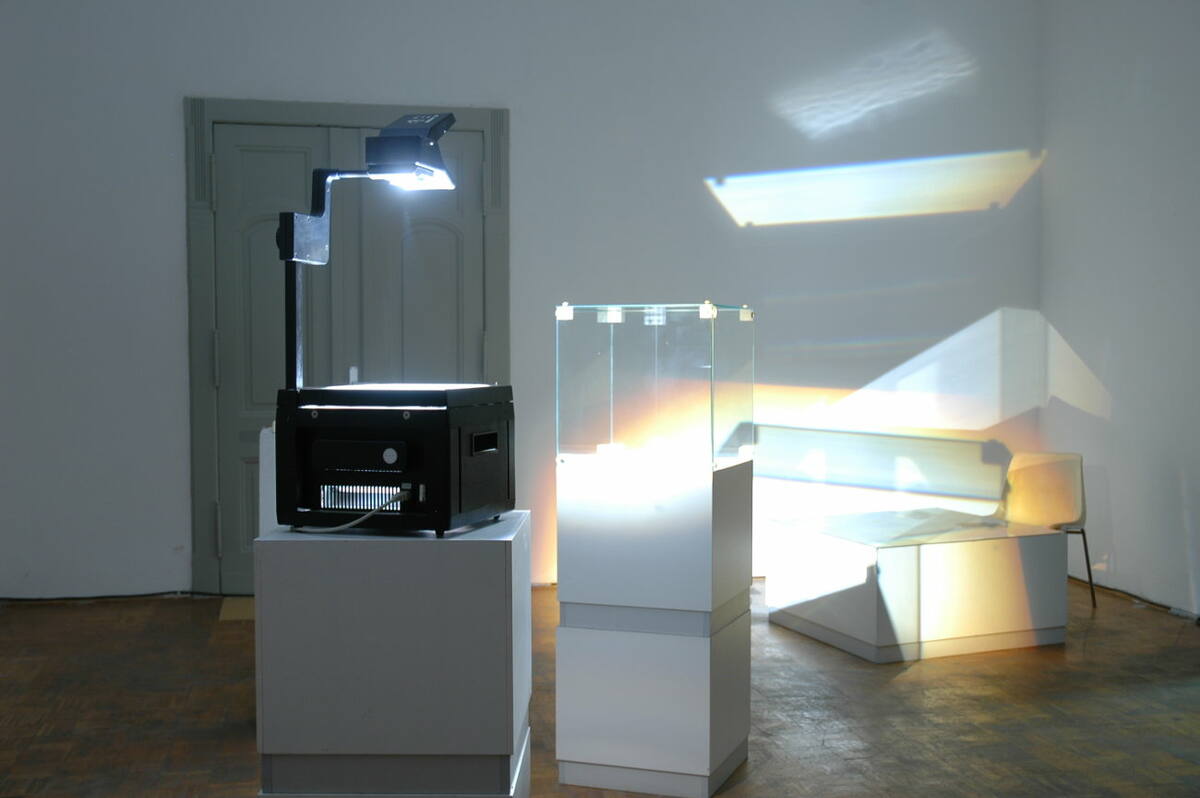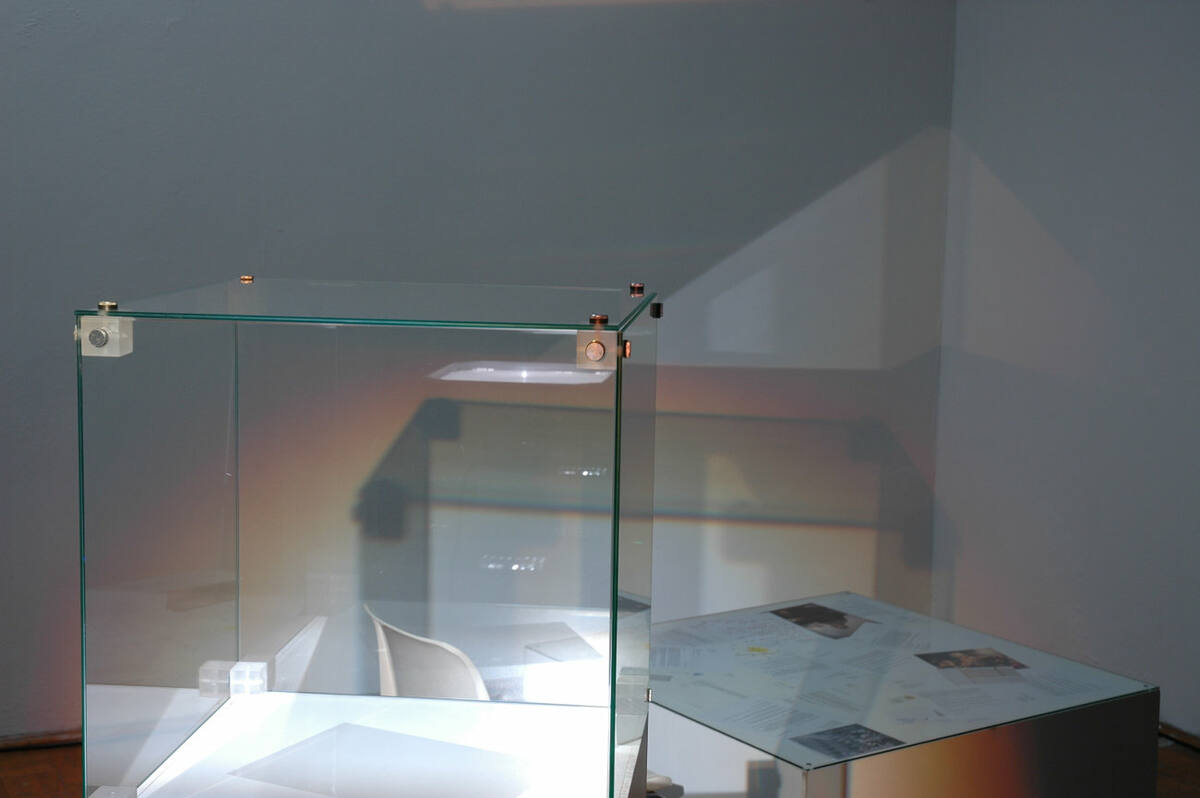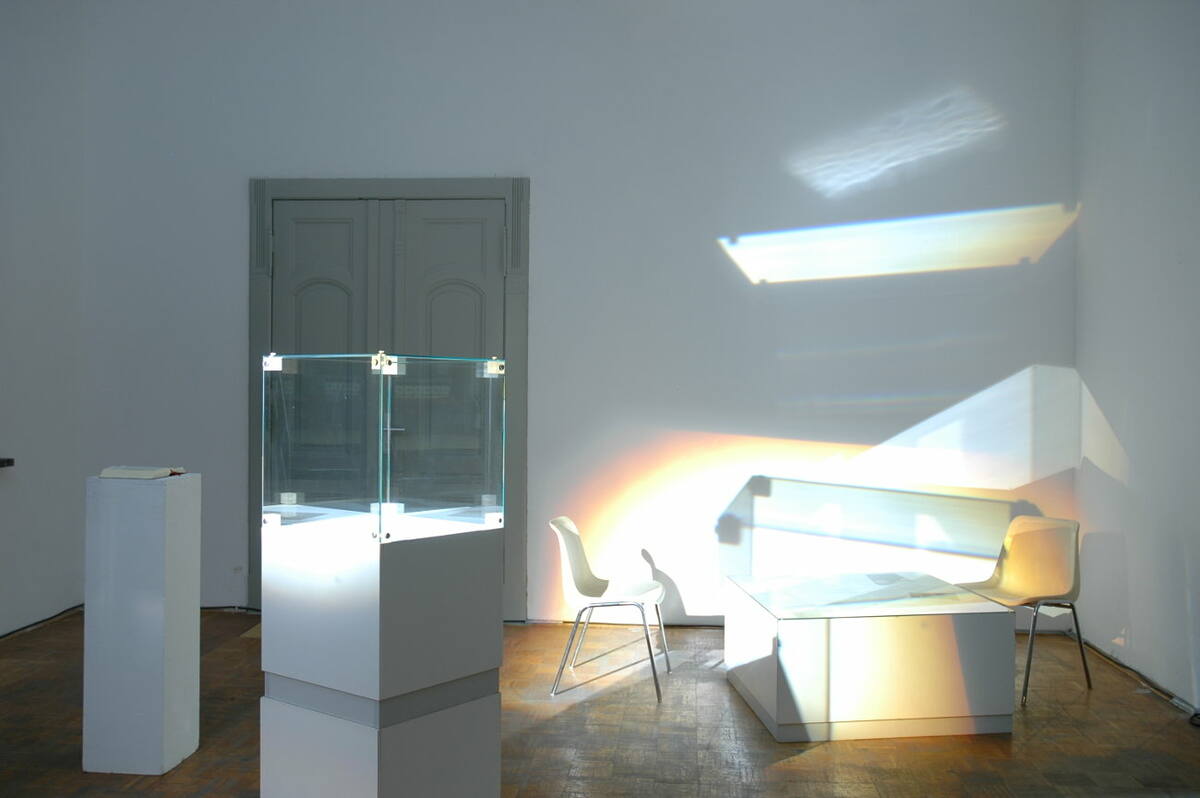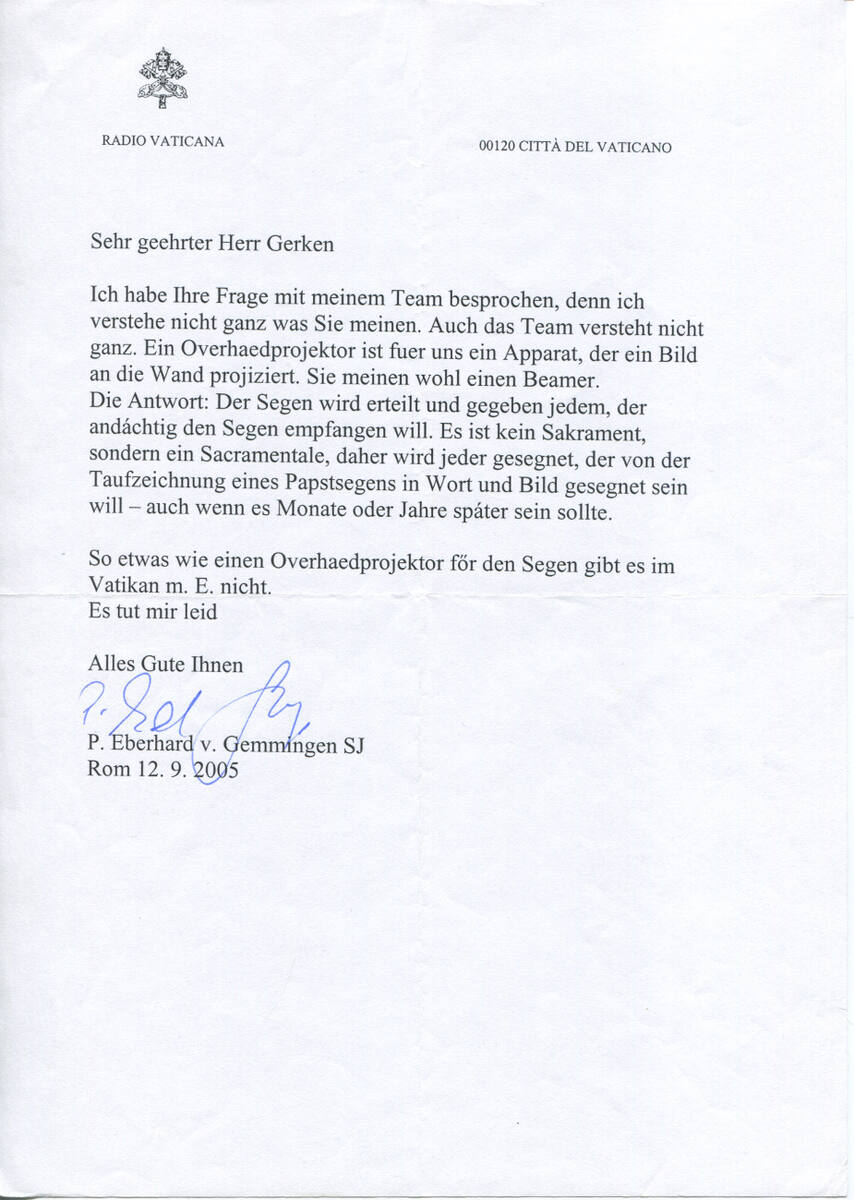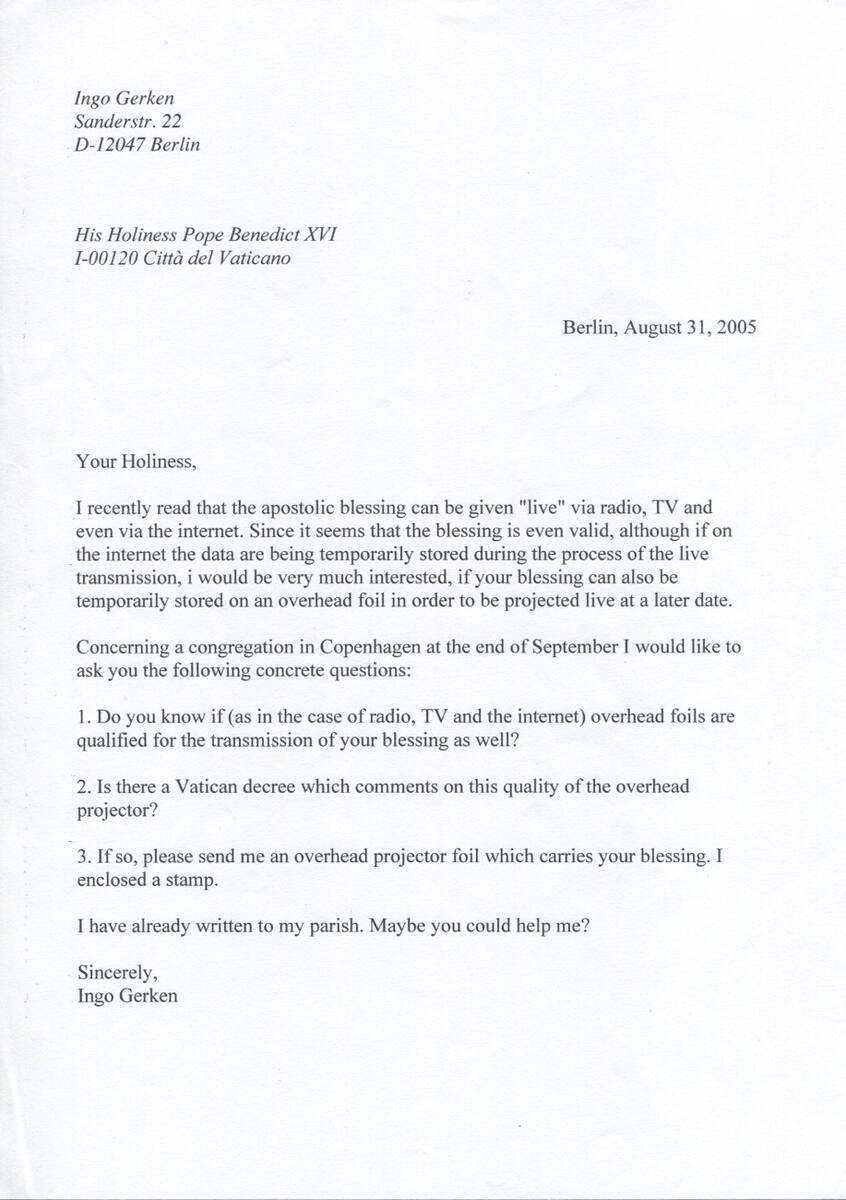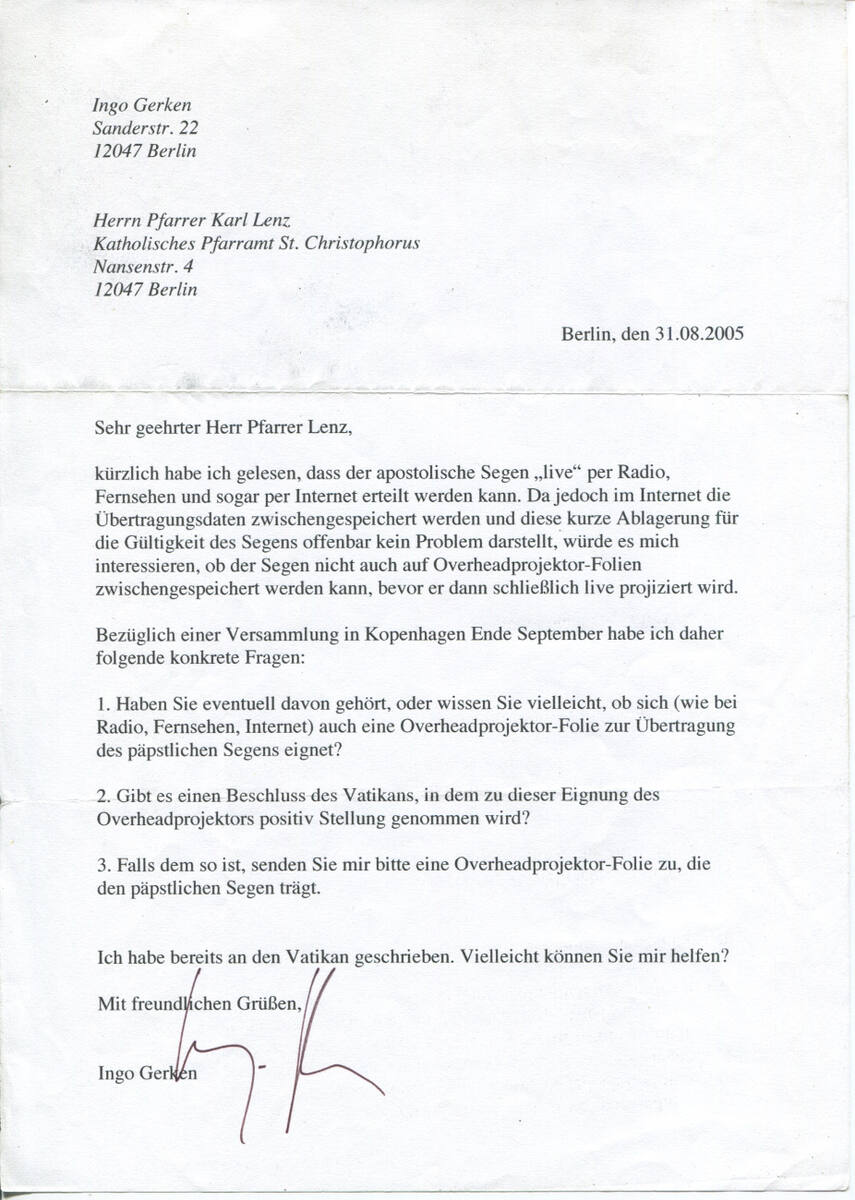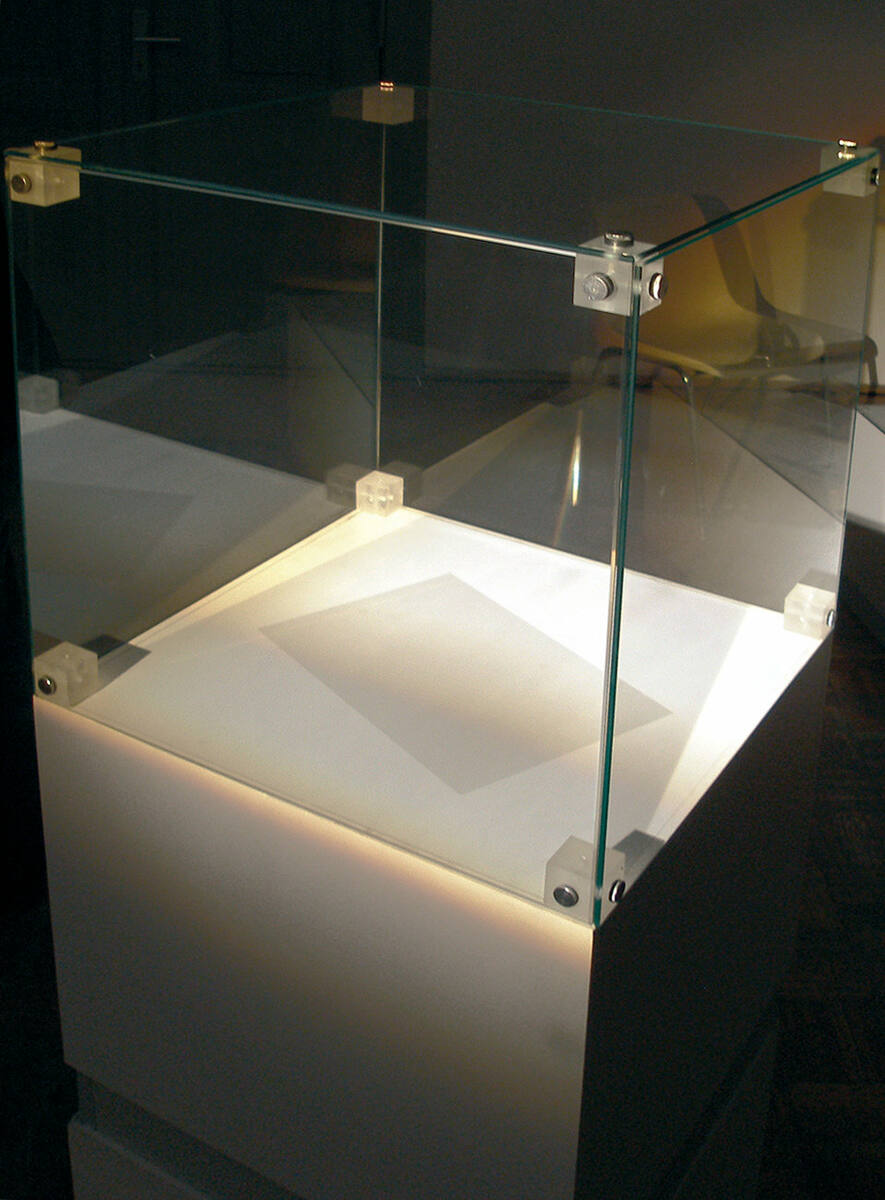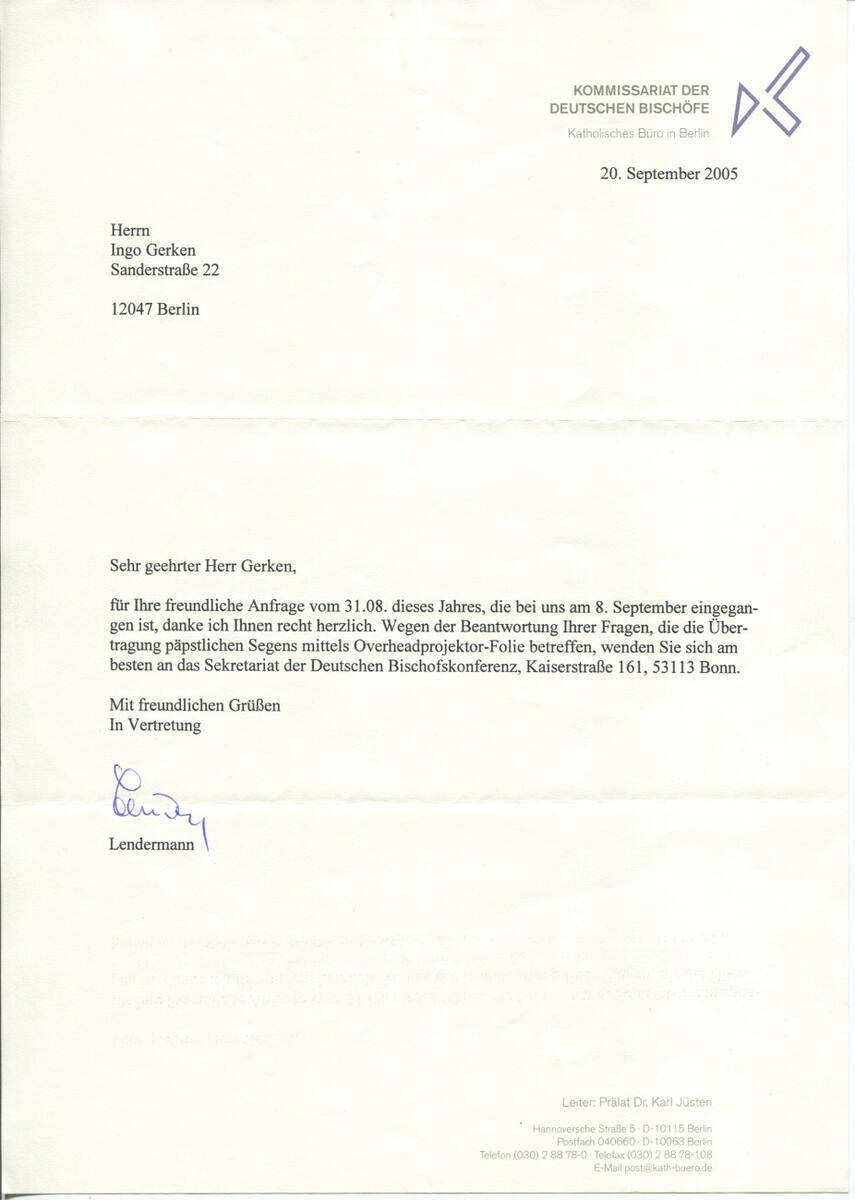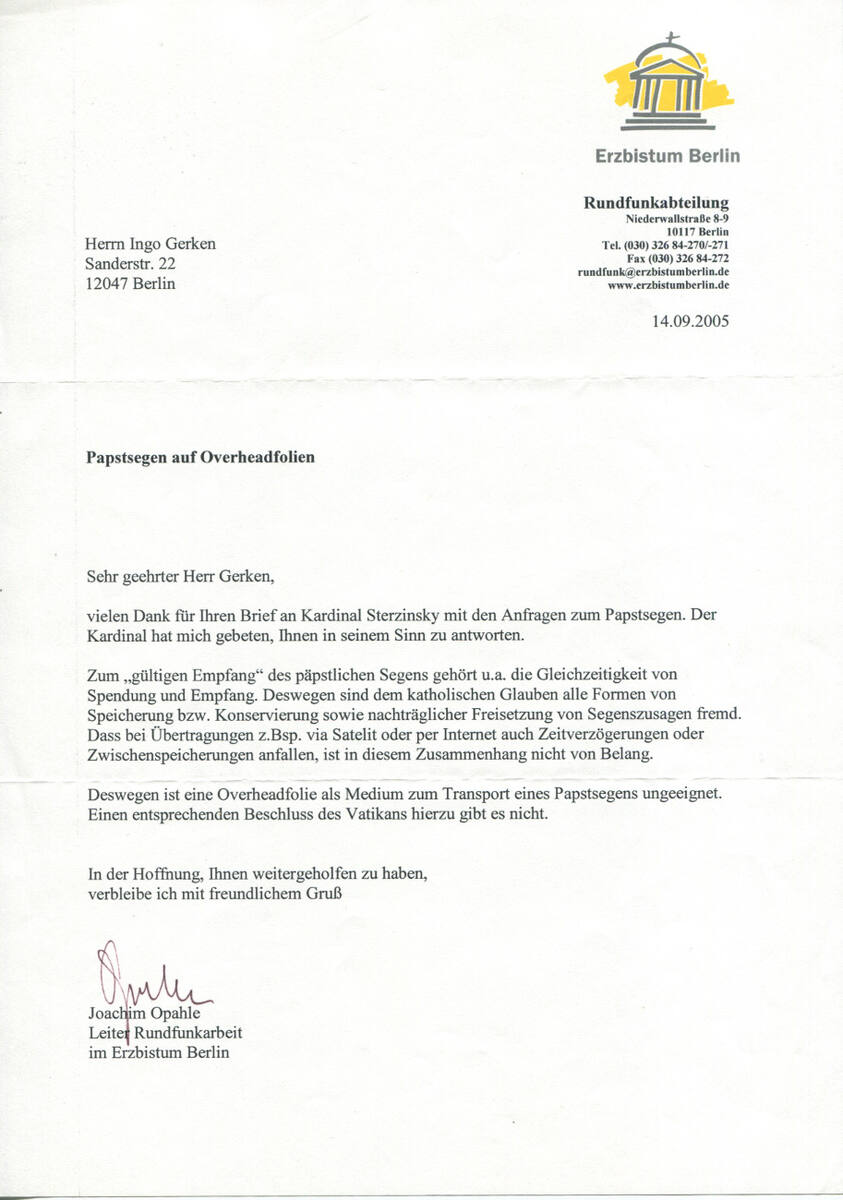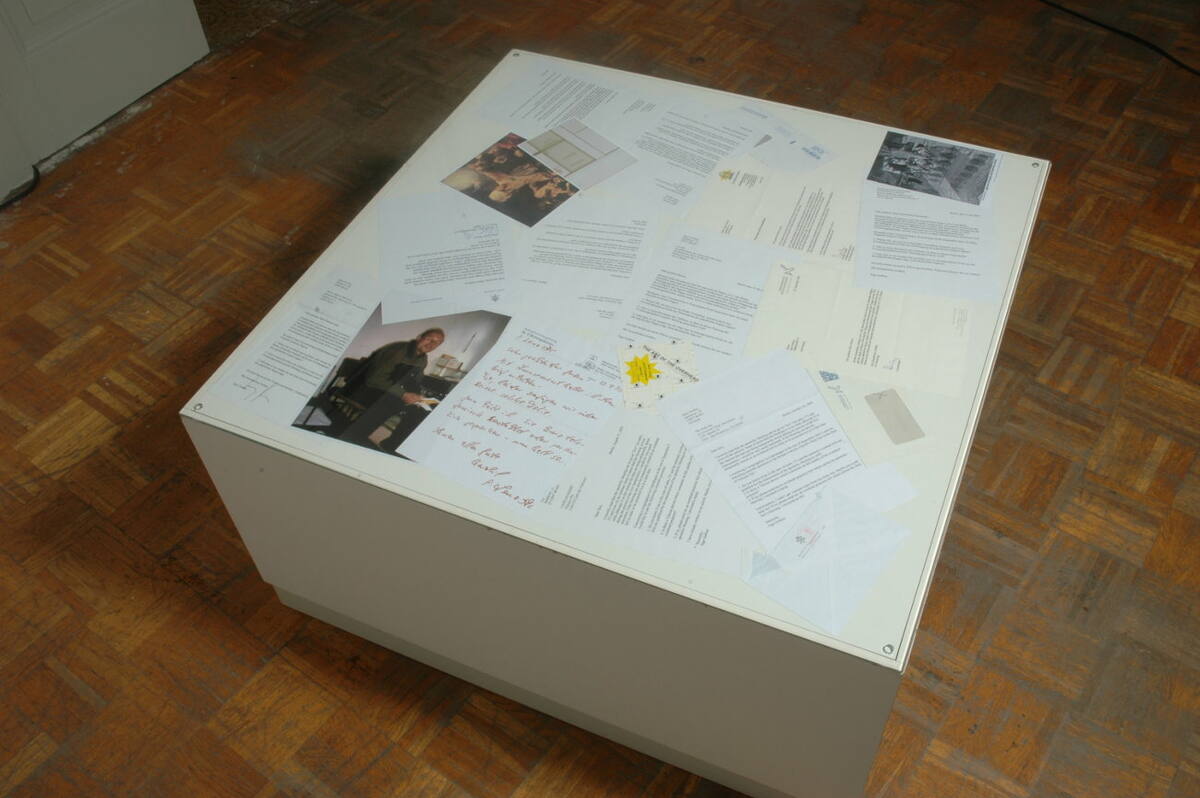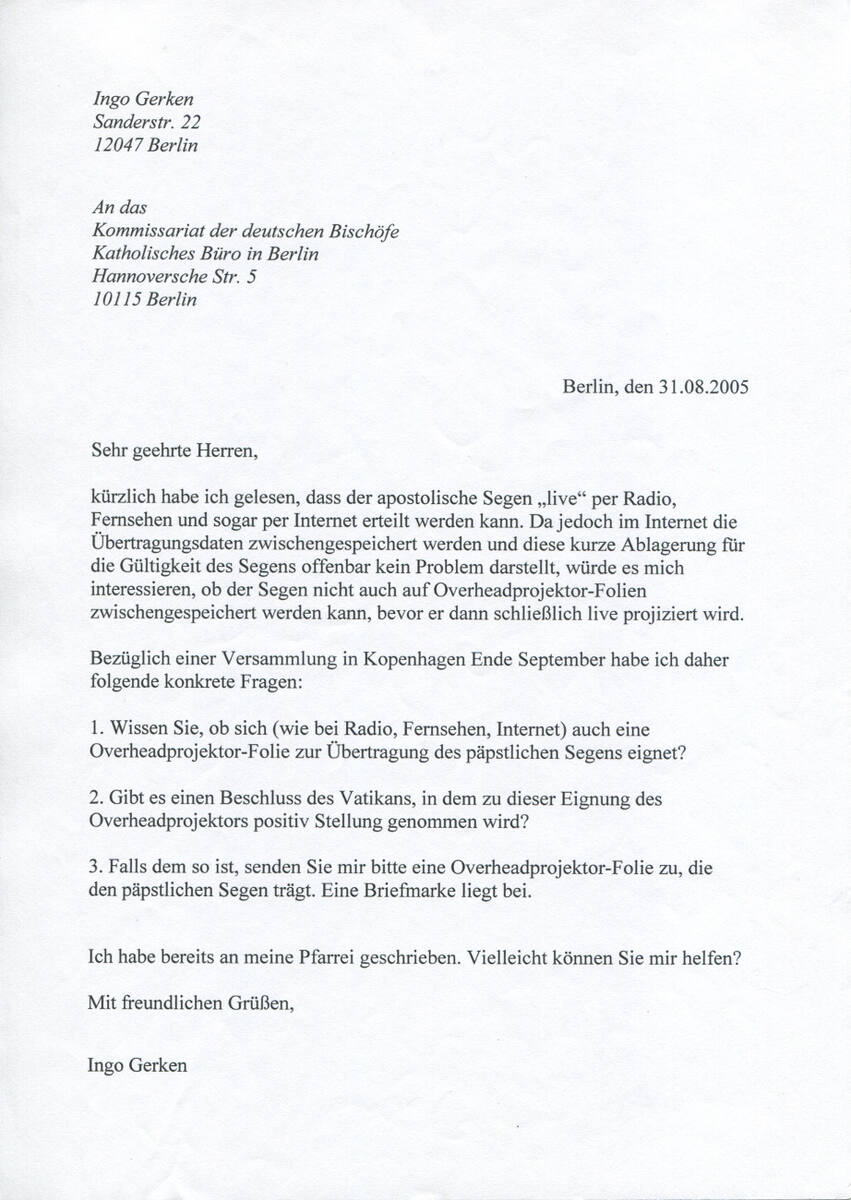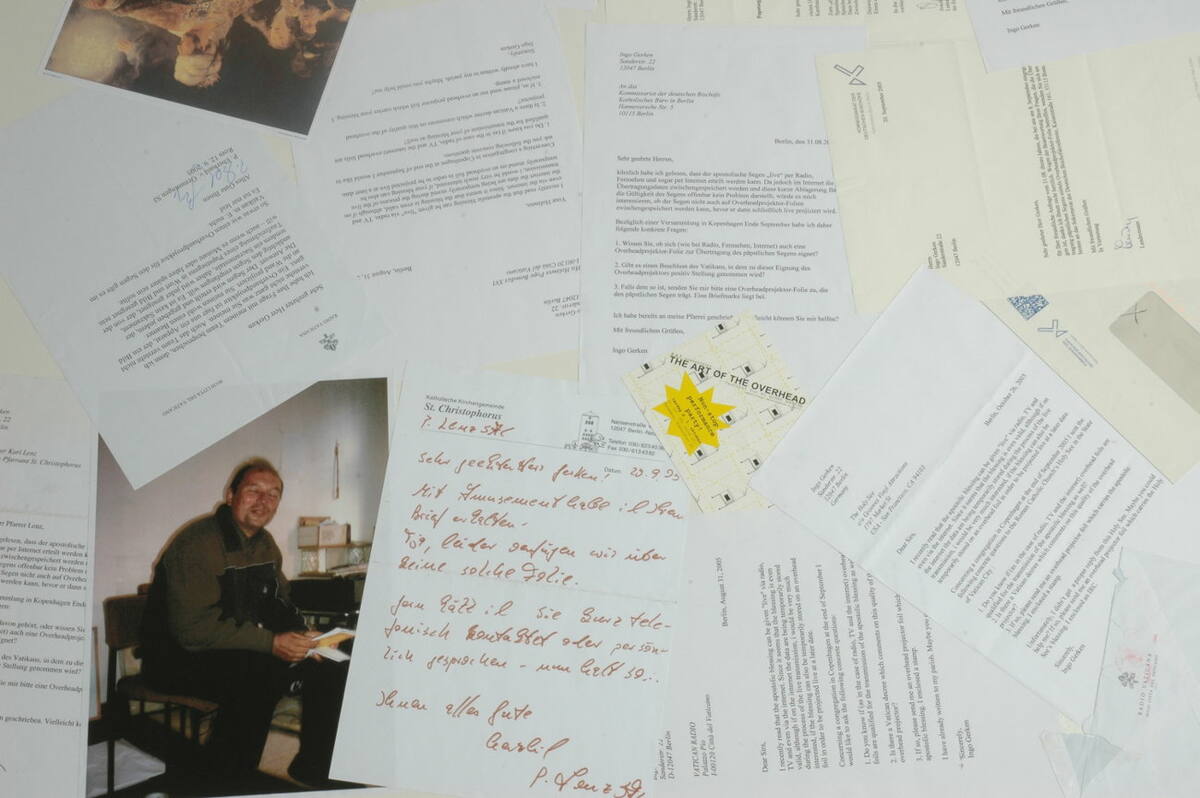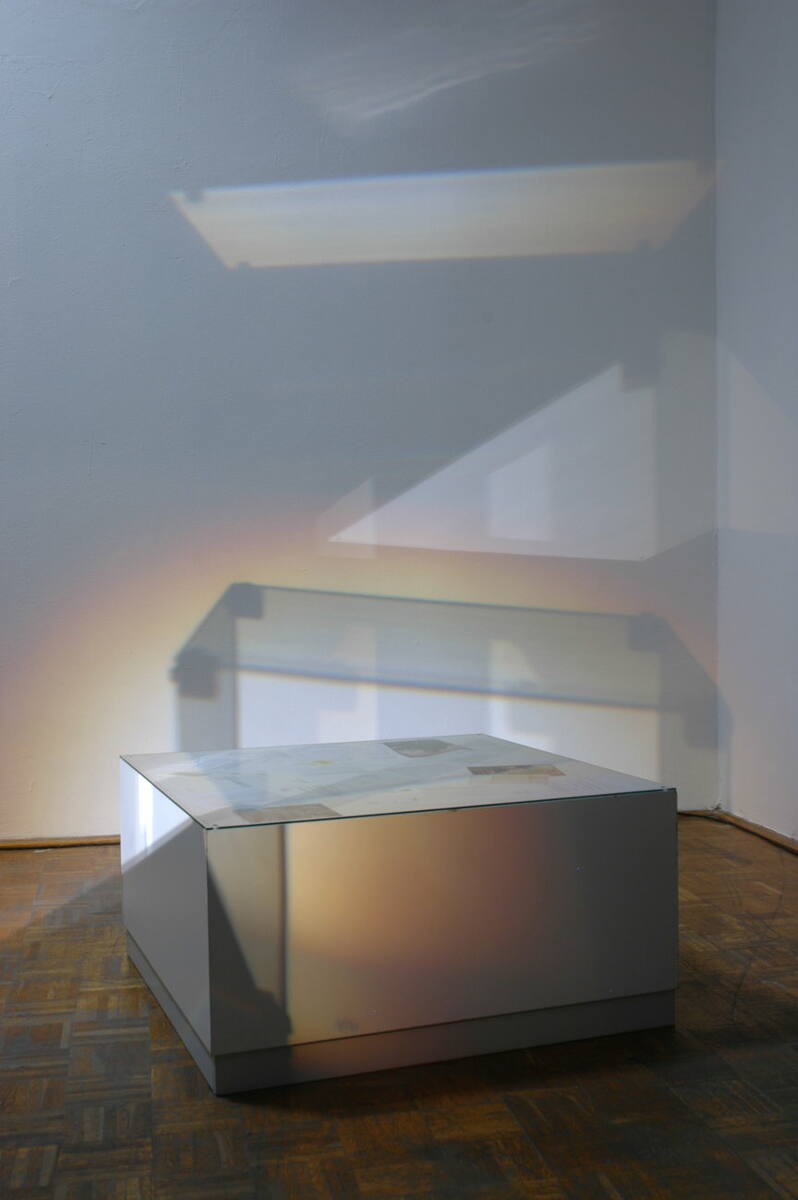Übergordnete Werke und Veranstaltungen
The Writings on the Wall
Personen
Media
"5 Suddenly the fingers of a human hand appeared and wrote on the plaster of the wall, near the lampstand in the royal palace. The king watched the hand as it wrote. 6 His face turned pale and he was so frightened that his knees knocked together and his legs gave way. 7 The king called out for the enchanters, astrologers and diviners to be brought and said to these wise men of Babylon, 'Whoever reads this writing and tells me what it means will be clothed on purple and have a gold chain placed around his neck, and he will be made the third highest ruler in the kingdom.' 8 Then all the king's wise men came in but they could not read the writing or tell the king what it meant." (Old Testament, Daniel 5, 5-9)
The Writings on the Wall (2005) by Martin Conrads and Ingo Gerken interrogates the efficacy of the pope's blessing when transmitted through the media. Originally, the presence on St. Peter's Square or being in a visible distance to the one giving the blessing was necessary. But in 1967 the Holy See confirmed that the apostolic blessing could also be validly received if transmitted through the radio, and similarly, almost twenty years later, in 1985, through TV. After another ten years, in 1995, a similar decree was issued concerning the mediation through the Internet. Saving and repeating the blessing, however, would lead to an invalidity of the blessing. Yet as far as the direct transmission through the Internet is concerned, even during a live streaming, the data are briefly buffered. In this case, the transmission of the blessing is more a question of faith rather than simultaneity, the artists suggest.
Why, the artists ask, can the temporary file-saving of the blessing not also be transferred to other media without loosing its validity?
After all, apart from the successively increased media compatibility of issuing and receiving blessings, there were also other significant deviations from the tradition of the blessing, such as the 'silent' blessing caused by the frailty of John Paul II, which was given equal standing to the 'spoken' one, although this privilege was only the pope's alone.
In accordance with these modifications, Martin Conrads and Ingo Gerken reach the conclusion that the overhead projector as a medium for live-transmission and the transparency as a so-called saving programme would be an ideal, but so far neglected medium for papal blessings. Biblical motifs like a blessing hand and the aureole that surrounds holy people like an illuminated circle of clouds, or the writing on the wall, about which we can read in Daniel 5, support the idea, they say, that the overhead projector could serve the Holy See as a perfect medium for transmitting the blessing through a medium.
Taking these considerations as a point of departure, the artists wrote to several church authorities, asking them to respond to the following questions:
-
Do you know whether (just like the radio, TV, Internet), an overhead projector transparency would be suitable for transmitting a papal blessing?
-
Is there a decision by the Vatican that takes a positive stance to the suitability of the overhead projector?
-
If this is the case, please send me an overhead transparency bearing a papal blessing.
That the reception of a blessing mediated by an overhead projector must be an individual matter of faith and opinion – that is what the Writings on the Wall tell us.
Text by Angelika Richter (From: On Icons, Idols, Avatars, and Other Proxies)
